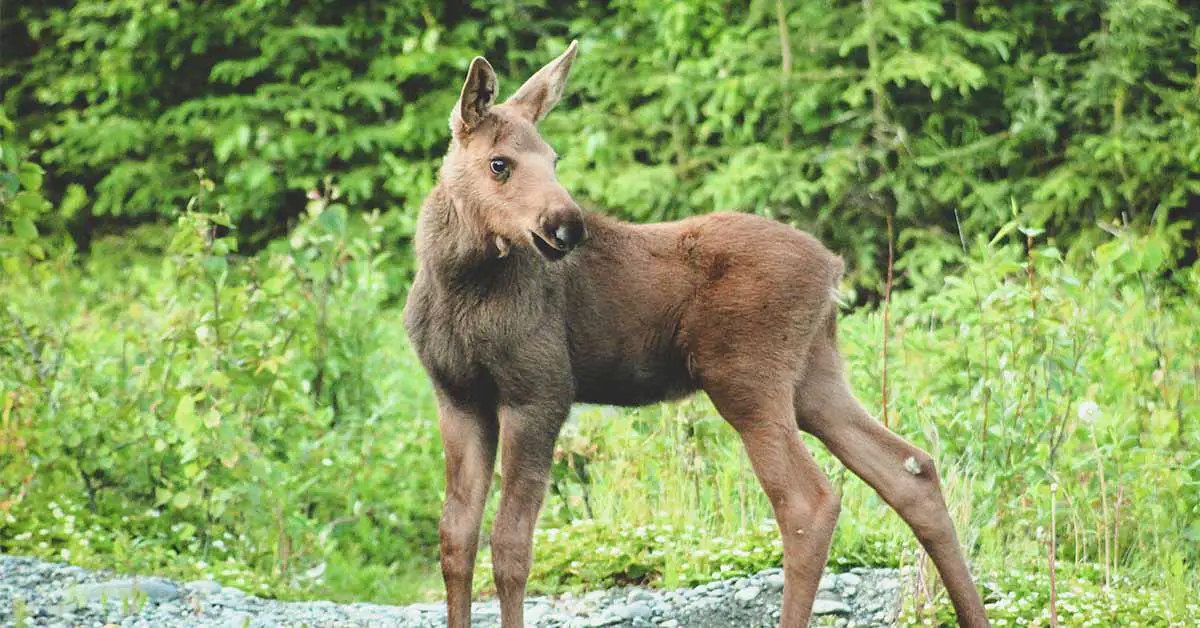Moose are majestic animals but they are not to be approached. Although they are not naturally aggressive, they can become confrontational when provoked, especially a mother protecting her calves. In general, it’s advisable to avoid moose when you see them in the wild. But once in a blue moon, a moose and a human could strike up an unlikely friendship.
“A Moose and His Girl”
A woman has cared for this moose since he was a baby in a wildlife park. The Alaska Wildlife Conservation Center cares for a wide variety of animals who have been injured or orphaned. That includes many species native to the area, like bears, bald eagles, elk, deer, coyotes, reindeers, bison, foxes, porcupines, and of course, moose. This specific set of circumstances have allowed the woman and her moose to bond in a way reminiscent of humans and their pet dogs. [1]
Their story was captured by Vic Van Ballenberghe, a moose biologist, for the Alaskan Moose: A Journey With Giants documentary. Unfortunately, he passed away at age 78 on September 22, 2022, but his extensive research on the species outlives him. At first, he was a biologist with the U.S. Forest Service in Fairbanks. But when he visited Denali National Park in 1980, he began to study moose in close proximity. He officially retired in 2000 but he continued his research backed by the National Park Service, who gave him access to moose in restricted areas. [2]
More About Moose
According to National Geographic, moose are herbivores who live 15 to 20 years, range from 5 to 6.5 feet tall, and can weigh 1,800 pounds. They are the largest of the deer species, and males are easily identified by their massive antlers, which can span 6 feet. Because they are so tall, they like grazing in shrubs and high grass since lowering their heads to the ground could become arduous. Their big hooves act as snowshoes during the winter and help support them in marshy ground during warmer seasons. [3]
Moose can run up to 35 miles an hour over short distances and trot at 20 miles an hour. They are also excellent swimmers, and can submerge for 30 or more seconds as they eat aquatic plants in the summer. In September and October, the mating season begins. The males, called bulls, attract mates by bellowing loudly and they may even fight other males with their antlers for mating supremacy. After mating, females and males separate and seem to ignore each other until the next year. Females can bear one or two calves in the spring, and the young grow quickly and stay with their mothers until the fall comes.
Vic Van Ballenberghe’s Legacy
The late writer Sherry Simpson spent a lot of time with Van Ballenberghe during his work on moose. She described him, saying, “…Maybe all wildlife biologists become enamored of their subjects, but I liked Vic for seeing moose as admirable and lovely, and for wanting me to see it, too… He is a disciple of the old school of wildlife science, which prefers to learn about an animal by following it around, watching what it does, and trying to figure out why.“ [4]
Van Ballenberghe’s research uncovered many fascinating details about the species. For instance, in some years of his observations, only two out of ten calves made it to adulthood; the rest were killed for food by wolves and grizzly bears. He once tracked a cow that gave birth to her calves in the same place for 12 straight years. His work found that Denali Park moose opt for diamond leaf willow in the summer, the buds of felt leaf willow in winter, and mushrooms whenever they were around. Interestingly, moose usually sleep for about five minutes at a time.
“Some biologists say they’d rather face an irritated bear than a moose with a calf,” wrote Simpson, “but I came to see that Vic’s quiet confidence soothes moose. When he comes upon them, he stands still, hands in pocket, and just looks.”
Sources
- “A Moose and His Girl.” YouTube. The Open Lens. August 15, 2010.
- “Victor Van Ballenberghe’s research while affiliated with University of Alaska Fairbanks and other places.” Research Gate.
- “Moose.” National Geographic.
- “The man who knew moose like no other.” Geophysical Institute. Ned Rozell. October 13, 2022

